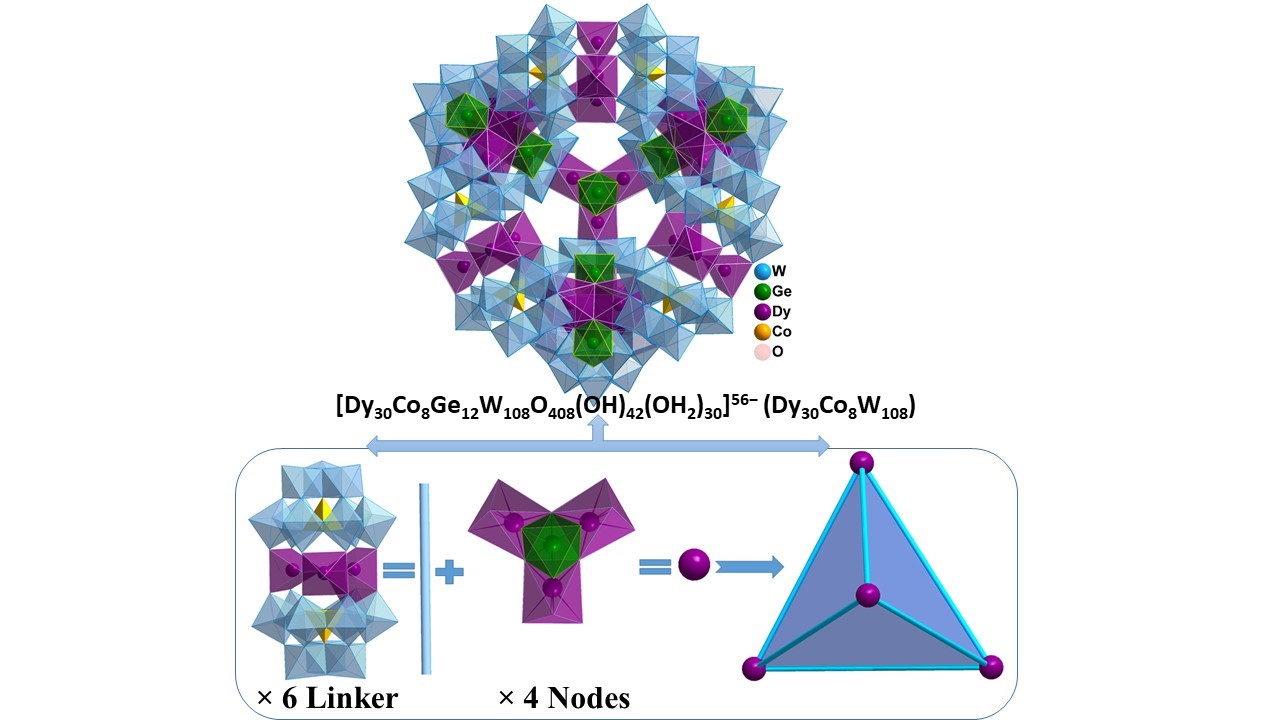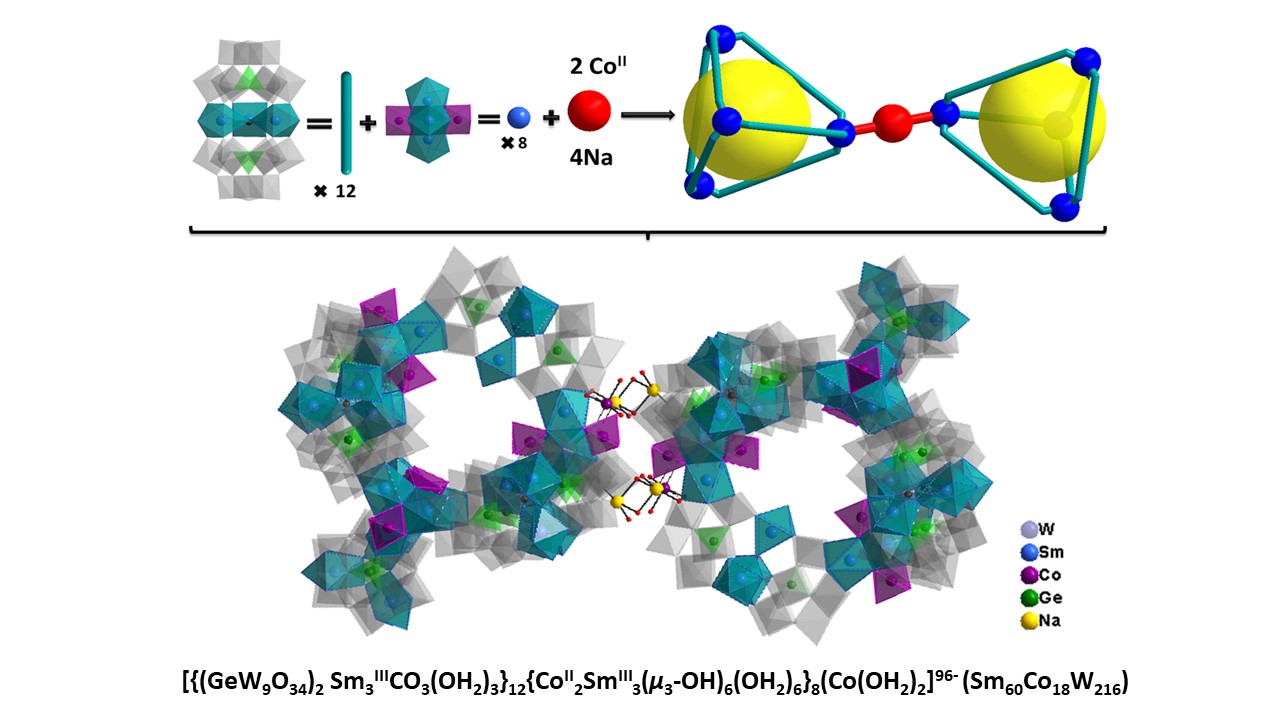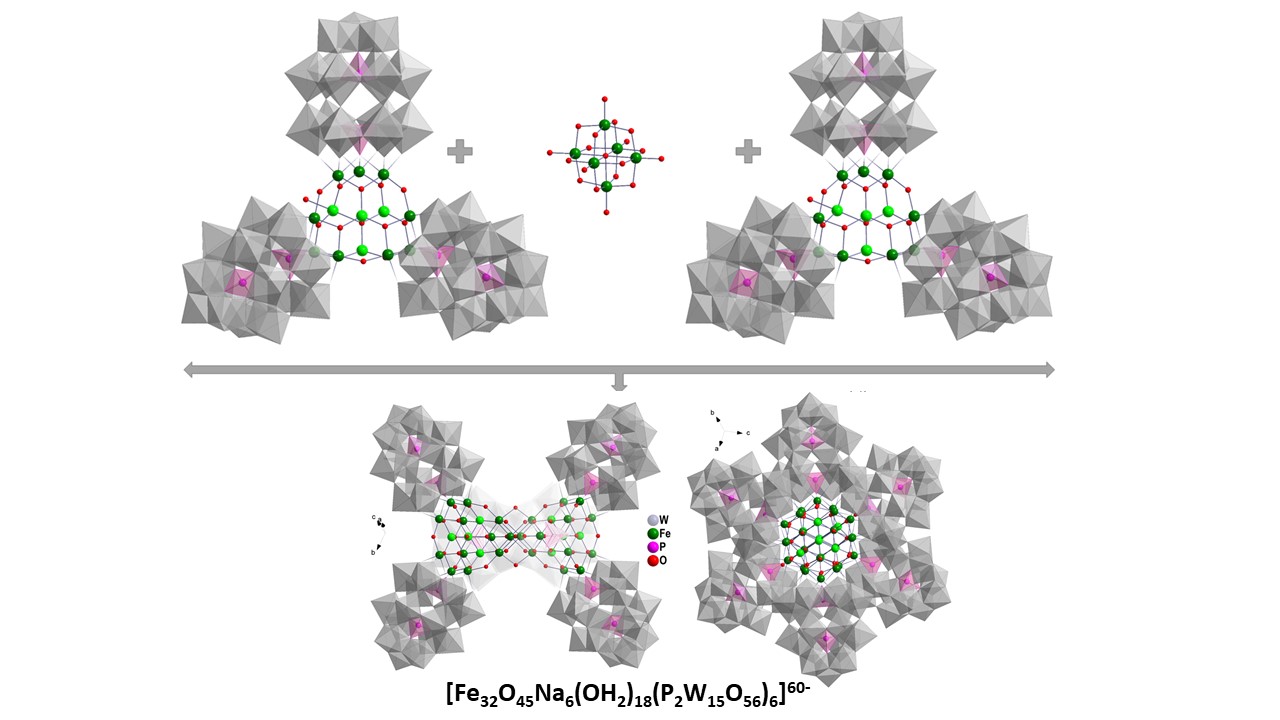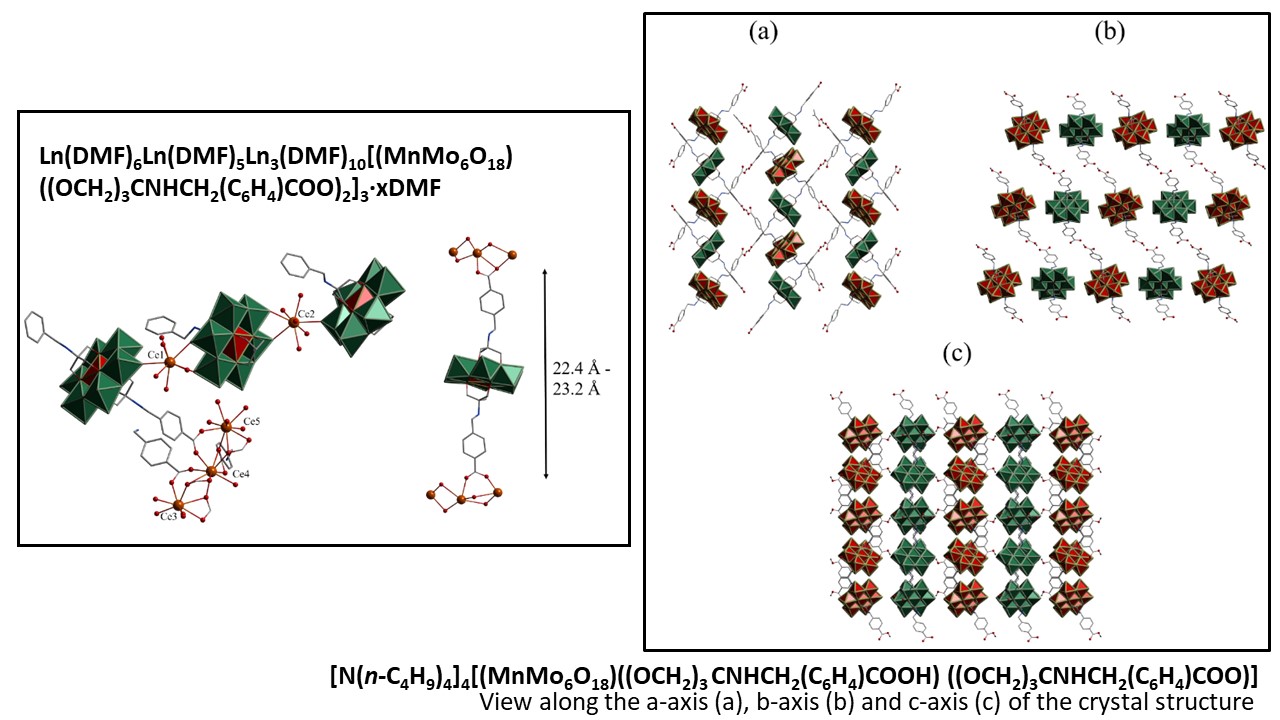
Dr. Masooma Ibrahim
Polyoxometalate-Based Functional Materials
+49 721 608-24346
masooma ibrahim ∂does-not-exist.kit edu
orcid.org/0000-0002-8520-8585
Functionalization of POMs by Metal Cations and Organic Groups
 |
 |
 |
 |
Polyoxometalate (POM) clusters represent a class of inorganic compounds, which show an unmatched variety of molecular and electronic structures with unique properties that make them attractive for applications in magnetism, magnetic coolers, imaging, catalysis, energy and medicine. POMs and their lacunary derivatives can be functionalized by grafting of the organic substituents and metal cations on the surface of POMs, which offers the possibility to deeply tune the properties of the resulting hybrid system. Under controlled basic conditions, lacuanary POM ligands can be produced by removing one or more metal-oxo polyhedrons from the parent POM structures. Lacunary POMs offer unique features as ligands, including their size, diamagnetic nature, arrangement of coordination sites, flexibility of coordination modes and ability to rearrange, making it possible to incorporate any number of 3d-paramagnetic metal centers, lanthanide ions and 3d-4f-metal ions.
A combination of polyoxometalates (POMs) and metal organic frameworks (MOFs) results in polyoxometalate-based metal organic frameworks, so-called POMOFs. These compounds may combine and/or improve the properties of POMs and MOFs. This field of research is still in its infancy but currently receiving an increasing amount of attention due to emergent applications in many fields such as catalysis, proton conduction, sorption and electrode materials. We are also involved in the systematic investigation of combining the appropriate organic linkers, metal cations and POM clusters in order to design different dimensionalities of POM-based hybrid material.
